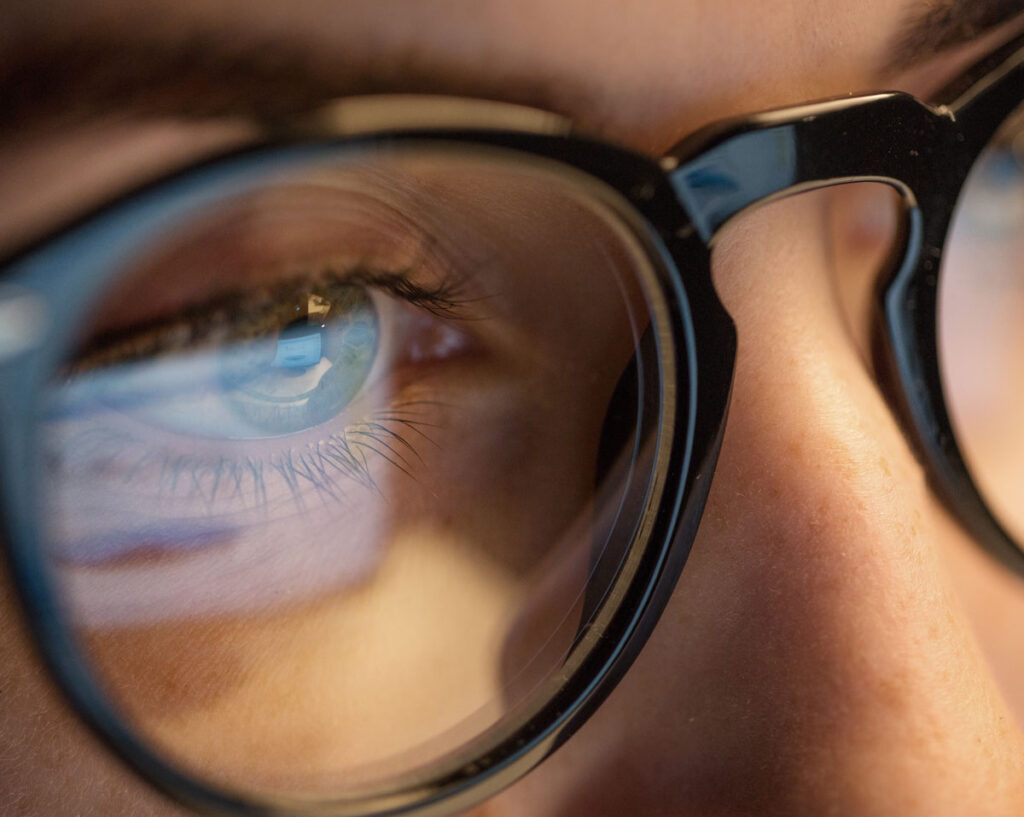Research shows that coloured overlays and tinted lenses can help reduce Visual Stress. This is a condition that causes text to appear distorted or uncomfortable to read. These coloured filters may improve reading fluency, reduce eye strain, and make reading more comfortable, especially for children and adults affected by Visual Stress. Visual Stress can worsen the symptoms of dyslexia, making it harder to engage with text and increasing reading fatigue.
While research results vary, many Optometrists report positive outcomes, especially for the 5% of people significantly impacted and the 20% who experience milder symptoms.


For children, you may notice:
Visual Stress occurs when lines of print appear like a ‘stripy’ pattern, creating distortions. The discomfort from these visual distortions is often unrecognised by sufferers. People often think these symptoms are ‘normal’ until colour is used to alleviate them. The simple use of an overlay can make text appear clearer and easier to read.
A Colour Overlay Assessment takes place after a full eye exam to rule out other causes of reading difficulties. During the test, we try various coloured acetate overlays to see which improves reading comfort and speed.
We measure reading ability with and without the overlay, so you can see the difference. If there’s a benefit, we recommend continued use of the overlay before progressing to Cerium Precision Tinted Lenses, available via referral.
Available at our Chandlers Ford branch.
Visual Stress and dyslexia are separate conditions, though they can overlap. Whilst Visual Stress does not cause dyslexia, it can make reading even harder for those with learning difficulties.
Using coloured overlays can ease visual discomfort, helping individuals better cope with other learning challenges. They also provide a low-cost starting point before considering more customised tinted lenses.
It’s believed that Visual Stress stems from hyperexcitability in the Visual Cortex. This is where certain cells process visual information too quickly. Coloured filters help calm these cells, improving the ability to read by reducing the stress on the visual system. The right colour is highly individual, tailored to each person’s needs.
Rawlings is a long-established independent business serving the communities of twelve towns in Hampshire and Surrey, where we have built a strong reputation for the quality of our professional expertise and service.
Rawlings & Sons (Opticians) Limited is registered in England and Wales No 02862381. Rawlings & Sons (Opticians) Limited are a credit broker and not a lender. We offer credit products from Mitsubishi HC Capital UK PLC trading as Novuna. Rawlings & Sons (Opticians) Limited is authorised and regulated by the Financial Conduct Authority FRN 990854. Credit subject to age and status. Finance is only available for audiology products The interest free plans which are repayable within 12 months and in no more than 12 instalments are not regulated by the Financial Conduct Authority. Unregulated plans are not covered by the Financial Ombudsman Service.
© Rawlings Opticians 2025 Contact | Privacy Policy | Feedback | FAQ | Complaints | Disclosure Statement | Cookies Policy
Contact | Privacy Policy | Feedback | FAQ | Complaints | Disclosure Statement | Cookies Policy
© Rawlings Opticians 2025